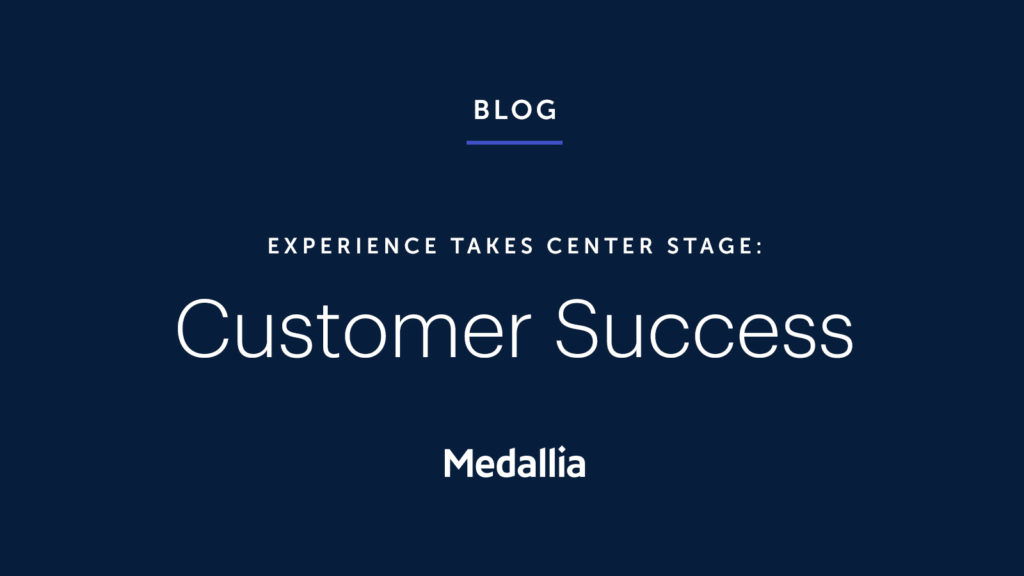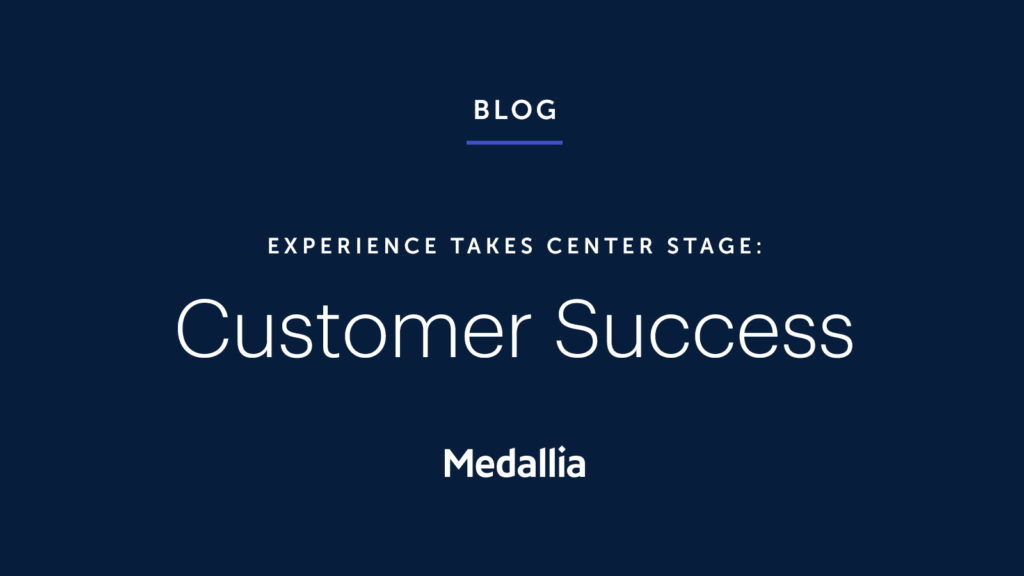Medallia Experience 21: 5 B2B Customer Success Strategies to Drive Long-Term Value


During Medallia Experience 21, leaders discussed how companies can better measure success and shared these 5 B2B customer success strategies to drive long-term value.
In the ever-changing business world, true partnership is the only way to succeed and thrive. To maintain successful relationships in this busy and competitive marketplace, we must focus on achieving and delivering brand value and agreed business outcomes.
To ensure this is met and fulfilled, we need to truly understand how we can support customers and assess where we are today to the service we have delivered thus far. Now that the pandemic has shaken the entire business ecosystem, B2B customers are increasingly seeking transparency in achieving whatever outcome they want to achieve.
Drawing from lessons learned during Medallia’s Experience 2021 virtual event, top customer success thought leaders discussed why companies should change how they measure and deliver success that helps them to focus on long-term value. That means long-term sustainability and success depend on creating lasting and meaningful value for customers, employees, and shareholders.
Where should leaders and organizations start? Here are five B2B customer success strategies shared by thought leaders at Medallia Experience 21:
- Focus on delivering meaningful and sustainable business outcomes
- Measure success in real time and understand the risk factors
- Align with customers on the why (purpose) and how (strategic goals)
- Establish a prescriptive engagement model
- Enrich and improve business value
#1 Focus on delivering sustainable business outcomes
Companies that find intersections between empathy, authenticity, feedback, and service delivery can build trusted and lasting relationships with customers. Sandra Cashe, Chief Customer Officer at Veriforce, said one of the top things companies should pay attention to is how much effort they put into satisfying their customers. In other words, how we do anything is how we do everything. Well-performing customer success teams or organizations can deliver successful outcomes if they:
- Prepare. Well-versed and have a thorough understanding of its customer needs, opportunities, and success factors.
- Collaborate. Work within the framework of a team both internally and externally.
- Adapt. Focus on customers’ changing priorities, needs, and environments.
- Anticipate. Lead conversations toward value and anticipate issues before they get out of hand.
The pandemic has allowed most businesses to re-evaluate their primary focus and priorities. It has led many companies to redefine their value statements and unite their purpose into their long-term goal. Doing so allows them to manage changes appropriately and predict what customers will do next.
#2 Measure success in real time and understand the risk factors
Delivering successful outcomes is nearly impossible if customers are not fully engaged, inspired, and happy working with the organization. One of the areas we need to own from start to finish besides net retention, Lauren Costella, Vice President, Customer Success at Goodtime, said, is tracking customer advocacy. It measures the growth you expect and how much customer success has contributed.
Forward-thinking organizations know that they succeed when their customers succeed. So, be sure to have a way for your teams to track and measure progress and communicate successes and opportunity areas in real time as much as possible. Instead of leaving things to chance or taking customers’ success for granted, you should meet them where they are in their journey.
That could mean in the product, in the community they choose to engage, or throughout their daily interaction with the organization. Why? Because traditional ways to capture customer feedback aren’t enough anymore. That way, customers can focus on the things they genuinely care about, and we can truly measure what matters most to them.
#3 Align with the customer on the why (purpose) and how (strategic goals)
There are different ways to engage customers, but you also need to be prepared to pursue multiple ways to learn from their perspectives. In other words, you cannot encourage or persuade customers to grow if you do not get them involved or you are taking something away from them. To enable us to create milestones to help customers stay on track and achieve their desired success, Mike Sasaki, Vice President, Global Head of Customer Success and Support at Mitek Systems, embraced these five guiding principles:
- Focus on identifying hero customers to convert from red to green
- Proactively engage with customers built around thought leadership and best practices
- Operationalize the customer lifecycle
- Develop internal customer champions to represent the voice of the customer
- Develop the customer success organization as a company within a company
Combining all of these guiding principles drives actionable insights to improve customers’ experiences and overall engagement. It also helps organizations leverage this insight to meet or exceed current and future expectations.
#4 Establish a prescriptive engagement model
One of the advantages of switching to a prescriptive rather than proactive and predictive model is that it helps companies deliver better outcomes and services for customers. It focuses not only on outcome-based goals but also integrates the behavioral aptitudes of customers.
In essence, a prescriptive engagement model leverages customer feedback to predict outcomes and design the best steps forward in achieving them. It also uses business intelligence to optimize business processes and best practices to deliver personalized and impactful customer experiences.
By having a prescriptive engagement model, Rich Prashad, Vice President, Customer Success at Sensei Labs, said we can set and achieve realistic goals that align with how we measure the success of our customers. With this type of engagement model, we do not just understand our customers inside and outside of their journey, but we can articulate, from their perspective, the steps they must take for them to be successful.
It is the key to delivering results and demonstrating the value we bring or create for the company on achieving its strategic goals.
#5 Improving and enriching business value
Mark Pecoraro, Head of Customer Success at Owl Insights, said a well-understood value can serve as a churn inhibitor and a growth engine. To ensure that we offer and deliver the highest value possible to our customers, we need to live up to our mission and purpose and execute in a credible, measurable way.
To systematically deliver this value, companies must capture customer sentiments throughout the entire lifecycle. It starts with a clear understanding of customers’ success factors and integrating them to drive successful business outcomes. By linking these signals or success factors, companies can measure, track, align, and actively listen and learn based on discovery data and observed behavior.
To embrace this strategy for growth, companies should aim for progress, not perfection. In other words, the business value is designed to enrich customers’ lives and tie everything back to this value creation and how it helps solve the business problems and challenges.
The more value we deliver and provide, the easier it will be for our customers to stay loyal and become brand advocates. The fastest way for customers to love us is to help them love their jobs by solving their significant business pain points with our technology solutions.
This article first appeared on Medallia's website.
